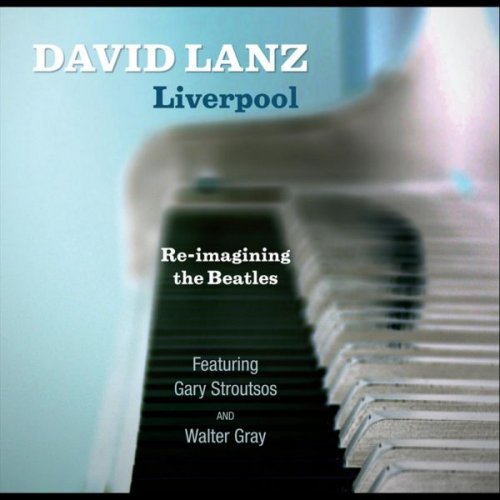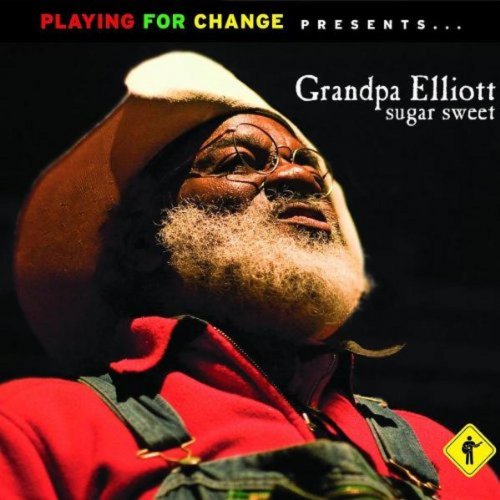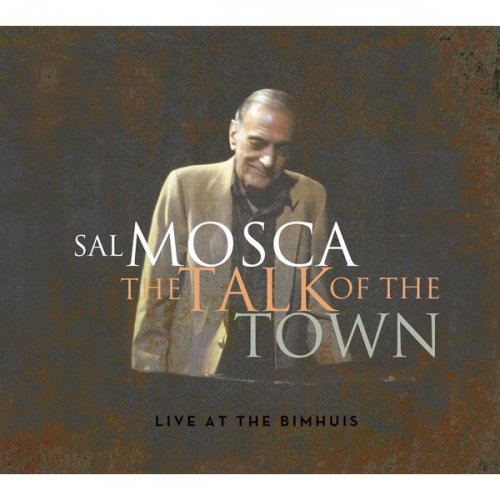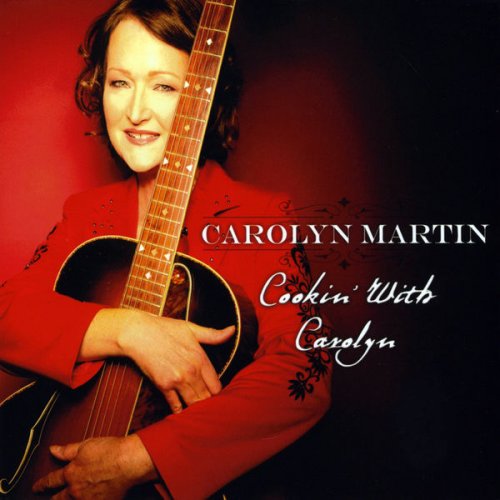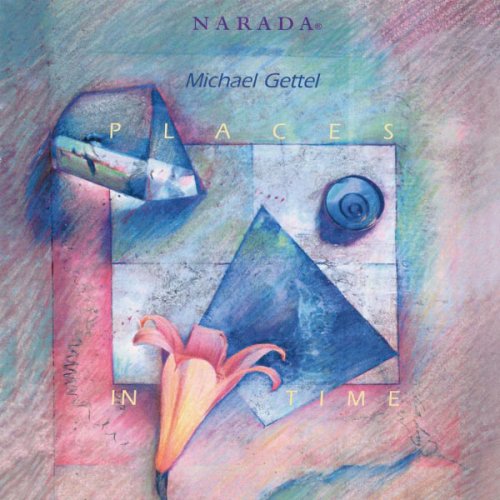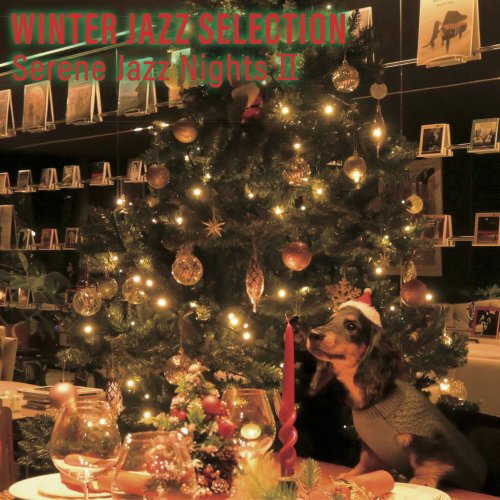Vox Futura, Andrew Shenton, Slovak Radio Symphony Orchestra, Robert Stankovsky, Pedroia String Quartet - Spells: Works of Juli Nunlist (2017) [Hi-Res]
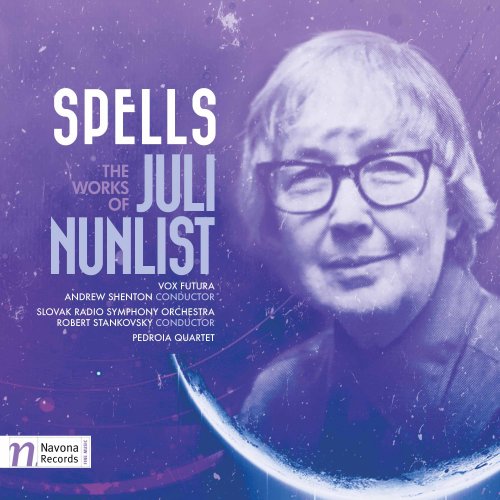
Artist: Vox Futura, Andrew Shenton, Slovak Radio Symphony Orchestra, Robert Stankovsky, Pedroia String Quartet
Title: Spells: Works of Juli Nunlist
Year Of Release: 2017
Label: Navona Records
Genre: Classical
Quality: FLAC (tracks) [44.1kHz/24bit]
Total Time: 1:16:01
Total Size: 677 / 308 MB
WebSite: Album Preview
Tracklist:Title: Spells: Works of Juli Nunlist
Year Of Release: 2017
Label: Navona Records
Genre: Classical
Quality: FLAC (tracks) [44.1kHz/24bit]
Total Time: 1:16:01
Total Size: 677 / 308 MB
WebSite: Album Preview
1. Pedroia String Quartet – String Quartet: I. — (05:14)
2. Pedroia String Quartet – String Quartet: II. — (07:21)
3. Pedroia String Quartet – String Quartet: III. — (02:28)
4. Pedroia String Quartet – String Quartet: IV. — (06:52)
5. Slovak Radio Symphony Orchestra & Robert Stankovsky – 6 Chansons from Prières dans l'arche: No. 1, Prière du papillon (04:19)
6. Slovak Radio Symphony Orchestra & Robert Stankovsky – 6 Chansons from Prières dans l'arche: No. 2, Prière de l'alouette (03:33)
7. Slovak Radio Symphony Orchestra & Robert Stankovsky – 6 Chansons from Prières dans l'arche: No. 3, Prière de la colombe (03:56)
8. Slovak Radio Symphony Orchestra & Robert Stankovsky – 6 Chansons from Prières dans l'arche: No. 4, Prière des petits canards (01:51)
9. Slovak Radio Symphony Orchestra & Robert Stankovsky – 6 Chansons from Prières dans l'arche: No. 5, Prière du petit poisson rouge (03:09)
10. Slovak Radio Symphony Orchestra & Robert Stankovsky – 6 Chansons from Prières dans l'arche: No. 6, Prière de la tortue (02:56)
11. Slovak Radio Symphony Orchestra & Robert Stankovsky – 2 Symphonic Poems: No. 1, The Sea and the Skylark (05:14)
12. Slovak Radio Symphony Orchestra & Robert Stankovsky – 2 Symphonic Poems: No. 2, Spring (04:45)
13. Vox Futura & Andrew Shenton – Spells: No. 1, Love Spell (05:09)
14. Vox Futura & Andrew Shenton – Spells: No. 2, Spell of Sleep (03:58)
15. Vox Futura & Andrew Shenton – Spells: No. 3, Spell against Sorrow (04:24)
16. Vox Futura & Andrew Shenton – Spells: No. 4, Spell of Safe-keeping (02:38)
17. Vox Futura & Andrew Shenton – Spells: No. 5, Spell to Bring Lost Creatures Home (04:05)
18. Vox Futura & Andrew Shenton – Spells: No. 6, Spell of Creation (04:00)
SPELLS, a new retrospective collection highlighting the music of poet and composer Juli Nunlist, marks a touching journey through the earnest, romantic, and dramatic sounds of the late artist’s compositional language. The album’s works demonstrate Nunlist’s appreciation for tradition and grandeur, and are driven by her remarkable gift for melody and clear fascination with instrumental texture.
Nunlist’s literary background seems to inform the potency of the album’s vocal works, including the intimate a cappella choral arrangement on the title track, a choral setting of six poems by the English poet Kathleen Raine; and the epic Six Chansons from Prières dans l’arches, for vocal soloists and orchestra. Though these pieces feature contrasting instrumentations, they both display the composer’s effortless text setting and brilliantly sensitive orchestration.
In each, her compelling writing brings the given text to life, and activates the nuance of its narrative and symbolism with intricate vocal and instrumental arrangements. To this end, Spells uses subtle melodic, harmonic, and textural recurrences to convey an enveloping and somewhat cyclical form.
The Six Chansons, on the other hand, build vast sonic wonderlands, imaged through Nunlist’s incredible command of orchestral space and density. Each of the Chansons pairs vocalists and a large instrumental ensemble, with some of the work’s most compelling moments arising from these unique and highly exposed pairings, such as solo mezzo-soprano and celeste.
The album’s romantic centerpiece arrives with Nunlist’s String Quartet, a piece which hearkens back to the genre’s seminal nineteenth century masterpieces with its captivating melodies and gripping subversions of functional harmony. Moreover, in a structural sense, Nunlist’s String Quartet is one of the most impressive works on SPELLS, especially in its dramatic closing movement.
In the final moments of the piece, the music refuses to repose, and, on the strength of a new theme, the quartet gains energy and determination. This surprising turn in the work’s formal trajectory is unquestionably meaningful, and seems to demonstrate a fearless quality in Nunlist’s compositional perspective.
Nunlist’s literary background seems to inform the potency of the album’s vocal works, including the intimate a cappella choral arrangement on the title track, a choral setting of six poems by the English poet Kathleen Raine; and the epic Six Chansons from Prières dans l’arches, for vocal soloists and orchestra. Though these pieces feature contrasting instrumentations, they both display the composer’s effortless text setting and brilliantly sensitive orchestration.
In each, her compelling writing brings the given text to life, and activates the nuance of its narrative and symbolism with intricate vocal and instrumental arrangements. To this end, Spells uses subtle melodic, harmonic, and textural recurrences to convey an enveloping and somewhat cyclical form.
The Six Chansons, on the other hand, build vast sonic wonderlands, imaged through Nunlist’s incredible command of orchestral space and density. Each of the Chansons pairs vocalists and a large instrumental ensemble, with some of the work’s most compelling moments arising from these unique and highly exposed pairings, such as solo mezzo-soprano and celeste.
The album’s romantic centerpiece arrives with Nunlist’s String Quartet, a piece which hearkens back to the genre’s seminal nineteenth century masterpieces with its captivating melodies and gripping subversions of functional harmony. Moreover, in a structural sense, Nunlist’s String Quartet is one of the most impressive works on SPELLS, especially in its dramatic closing movement.
In the final moments of the piece, the music refuses to repose, and, on the strength of a new theme, the quartet gains energy and determination. This surprising turn in the work’s formal trajectory is unquestionably meaningful, and seems to demonstrate a fearless quality in Nunlist’s compositional perspective.
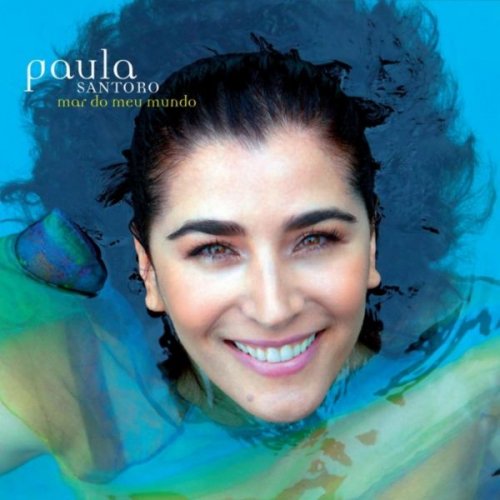
![Club Bolero, Armik - A Day in Brazil (2007) [Hi-Res] Club Bolero, Armik - A Day in Brazil (2007) [Hi-Res]](https://img.israbox.com/img/2025-12/15/5l607nskcv4xb0n237d8ngs7q.jpg)

